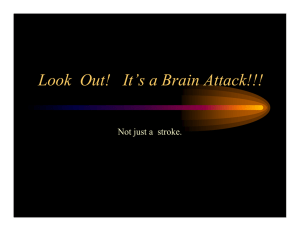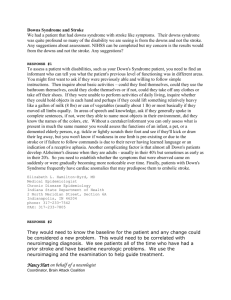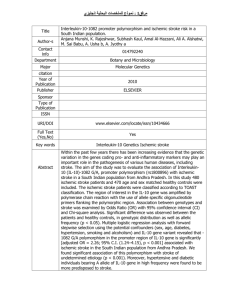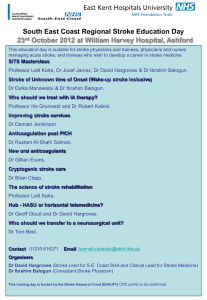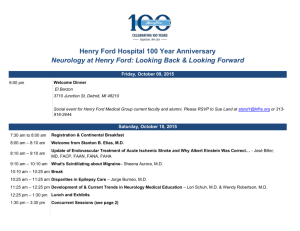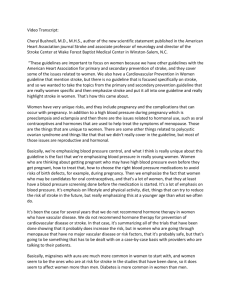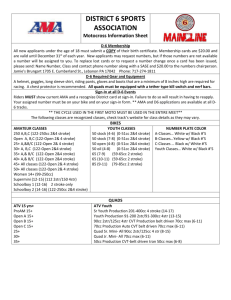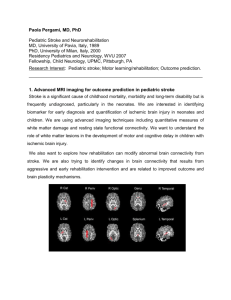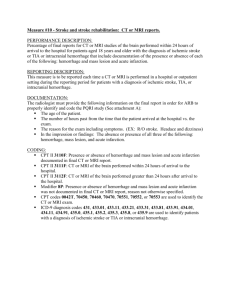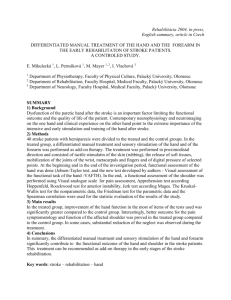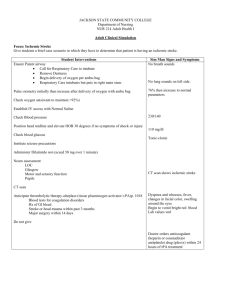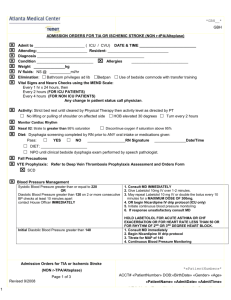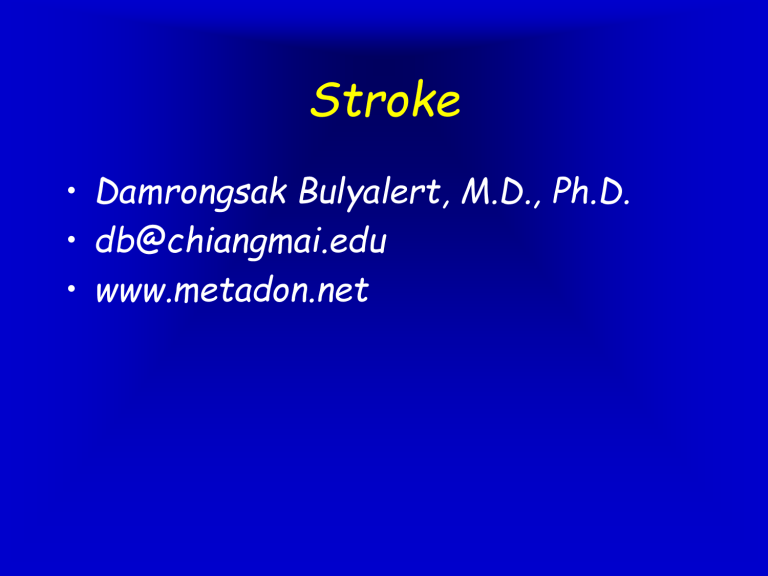
Stroke
• Damrongsak Bulyalert, M.D., Ph.D.
• db@chiangmai.edu
• www.metadon.net
What is a Stroke?
Interruption of blood flow to
an area of the brain due to
• narrowing of blood vessels
• blockage by clots
• rupture of blood vessel
2 types of stroke
• Ischemia: thrombosis and embolism
• Hemorrhage (intracranial):
– intracerebral
– subarachnoid
– etc.
Pathology
• Ischemia or hemorrhage leads to
dysfunction of the affected brain
tissue.
Symptoms and Signs
• Cerebral function
– impaired consciousness
– language dysfunction
– headache
• Cranial dysfunction
–
–
–
–
–
blurred vision
diplopia
facial weakness
swallowing difficulty
difficulty of speaking
–
–
–
–
difficulty of maintaining posture
nausea, vomiting
dizziness, vertigo
etc.
–
–
–
–
weakness
impaired sensation
ataxia
abnormal gait/posture/tone/reflexes
• Spinal symptoms
• etc.
Why Do People have Stroke?
• Non-modifiable risks:
– age
– sex
Why Do People have Stroke?
• Modifiable risks
–
–
–
–
–
–
–
heart disease
hypertension
diabetes
hypercholesterolemia
physical inactivity
alcohol abuse
etc.
• Potential risks
–
–
–
–
–
–
migraine
contraceptive use
drug abuse (pseudoephedrine)
polycythemia
leukemia
etc.
Spectrum of Stroke
• Transient ischemic attack (TIA)
– 5 minutes to hours (<24 hours)
• Reversible ischemic neurological
deficit (RIND)
– 24 hours to 1 month
• Stroke
– permanent deficit
– paralysis = อัมพาต (อามะพาด)
– paresis = อัมพฤกษ์ (อามะพรึก)
Differential Diagnoses
•
•
•
•
seizure
systemic infection
brain tumor
toxic-metabolic encephalopathy
Others
•
•
•
•
•
•
positional vertigo
cardiac events
syncope
trauma
subdural hematoma
herpes simplex viral
encephalitis
• transient global
amnesia
• dementia
• demyelinating
disease
• C-spine fracture
• myasthenia gravis
• parkinsonism
• hypertensive
encephalopathy
• conversion disorder
Investigation
• Imaging
– CT
– MRI
Treatment
• Goals of treatment of stroke
– reduction of brain tissue injury
– rehabilitation of the brain
– prevention of future stroke
Rx
• TIA
– Manage the risk factors
• Progressive stroke
– thrombolytic agent
• Completed stroke
– thrombolytic agent
• Embolic stroke
– anticoagulant
• Intracranial hemorrhage
– surgery when indicated
Aspirin
• Antiplatelet activity
• Indicated in thrombotic process
• 25% reduction of stroke in general
population
• Good for other neoplasms

